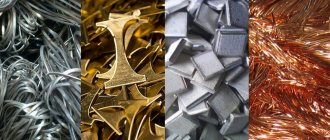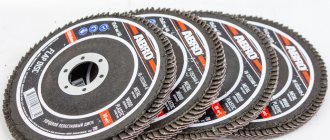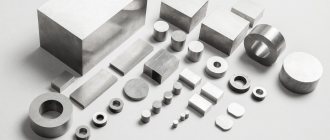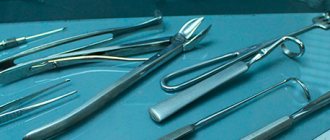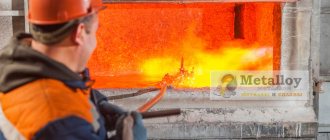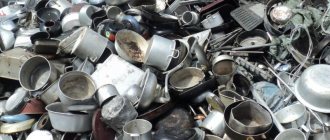Non-ferrous metals are different from ferrous metals. There are many non-ferrous metals, but only iron and its alloys are classified as ferrous. Ferrous metals often include vanadium, manganese, and chromium.
In Europe, non-ferrous metals are called non-ferrous; the origin of these names more accurately reflects the essence and properties of our heroes.
- The British call them non-ferrous metals .
- For the Germans their name is Nichteisenmetalle, Buntmetalle .
- The French designated non-ferrous metals as metaux non-ferreux .
We divide metals by properties and groups
Conventionally, non-ferrous metals are divided into 2 large groups - heavy and light.
A more detailed classification is carried out according to properties (physico-chemical). There is a division into 5 and 7 groups.
Types of non-ferrous metals:
- Light non-ferrous metals.
- Heavy metals.
- Noble.
- Rare and small.
- Absent-minded.
- Radioactive.
- Refractory.
The properties of non-ferrous metals are varied. These are corrosion resistance, high electrical and thermal conductivity, resistance in many aggressive environments.
Where are they used?
Imagine a world without non-ferrous metals. Throw away your phone and computer, along with your car keys. Turn off the light - because current flows through wires made of non-ferrous metal. You will also have to throw away the gas and electric stoves, and cook over a fire or build a stove. Therefore, let us treat these different and so necessary metals with respect.
It is impossible to imagine the modern world without the use of non-ferrous metals.
Some of them are mined in millions of tons per year, others several tons per year. But all of them are absolutely necessary for modern industry and for us, consumers.
Electrical engineering, steel alloying, sensors, diodes, thermocouples, infrared optics, military-industrial complex.
Industry specifics
Non-ferrous metal ores, as mentioned above, contain a small amount of the mined element. Therefore, for a ton of the same copper, up to 100 tons of ore are needed. Due to the large demand for raw materials, non-ferrous metallurgy is, for the most part, located close to its raw material base.
Non-ferrous ores require large amounts of fuel or electricity for their processing. Energy costs reach half of the total costs associated with smelting 1 ton of metal. In this regard, metallurgical enterprises are located in close proximity to electricity producers.
The production of rare metals is mainly based on reduction from compounds. Raw materials come from intermediate stages of ore beneficiation. Due to the small volumes and difficulty of production, laboratories are engaged in obtaining rare metals.
Recycled raw materials
It is already clear that non-ferrous metal production does not always meet the needs of industry. You have to dodge. That is, organize recycling collection points and collect scrap metal for delivery at these points. By the way, they pay quite well for scrap non-ferrous metals.
The cost of metal waste is formed based on several components:
- Metal (type, rarity).
- Dimensions.
- Batch size.
- The purity of the metal, its quality.
Scrap metal hunters
Copper, aluminum, lead, and titanium are in great demand among receivers.
- Copper contains copper alloys (brass).
- Tin is much more expensive than copper, especially in its pure form, but also in the form of utensils and babbitt (in bearings, for example).
- Nickel is an expensive metal, but it is rarely found in its pure form. In nickel silver dishes, used electrodes, heating elements of household appliances.
- Lead is sold “in the form” of batteries, printing equipment, and cable braids.
- Aluminum is inexpensive.
- pure zinc ; it is sold in the form of alloys.
- The most expensive metals are molybdenum and tungsten.
Light alloys
0
Aluminum alloys . Aluminum alloys have low density (3 kg/dm3), high thermal conductivity [λ = 0.12–0.18 W/(m °C) and satisfactory strength; plastic and easy to machine with cutting tools. Many can be welded using TIG or TIG welding with non-consumable tungsten electrodes. Gas submerged arc welding (LiCl, NaCl, KCl, KF) is also used. Sheet materials are welded using resistance welding.
Aluminum alloys resist corrosion in a dry atmosphere, are resistant to alkalis and weak acid solutions, but are susceptible to corrosion in humid (especially sea) air; unstable against the action of strong acids, soft (HB 60-130). In the range of 0–100°С, the coefficient of linear expansion α = (20–26)·10-6. Elastic modulus E = (7.0–7.5)·104 MPa.
The strength of aluminum alloys quickly decreases with increasing temperature (although there are alloys that retain satisfactory mechanical properties up to 250-400°C).
Aluminum alloys are divided into cast and wrought.
Alloys of the following systems are used for casting: Al-Cu; Al-Zn; Al-Mg; Al—Si; Al—Cu—Si; Al—Zn—Si (Table 11).
Al-Mg alloys are the most durable; however, their casting properties are low. AL13 alloy with increased corrosion resistance and heat resistance is used for the manufacture of thermally stressed parts. For castings of simple shapes, AL7 and AL19 alloys are widely used.
Al-Si alloys (silumins) have the best overall performance. They are characterized by low density (2.6-2.7 kg/dm3), good casting properties, weldability and increased corrosion resistance. Silumins are used for casting thin-walled parts of complex shapes. To increase the mechanical properties, silumins are modified with metallic sodium, Na and K fluorides, as a result of which silicon inclusions acquire a granular form favorable for strength.
Heat treatment (heating to 520-530°C for 4-6 hours, quenching in hot water, aging at 150-180°C for 10-15 hours) increases strength by 20-25%.
Large-sized shaped parts are made from silumins AL4, AL5, AL12.
AL9 alloy has good weldability and is used for welded structures. Its strength is lower than that of other silumins.
Complex alloy AL1 is used for casting cylinder heads and pistons of air-cooled engines.
Parts made of aluminum alloys that require tightness (crankcases) are impregnated with synthetic thermosetting substances (most often raw Bakelite) and then heated to the Bakelite curing temperature (140-160°C).
Of the wrought alloys (Table 12), the most common are duralumin (Al-Cu-Mg-Mn alloys, sometimes with Cr, Zn, Fe, Si additives).
Duralumin types D1, D16, B95 are subjected to heat treatment, which consists of quenching in water at 500-520°C, followed by exposure at normal temperature for 75-100 hours (natural aging) or at 175-150°C for 1-2 hours (artificial aging). Duralumin is used primarily for the production of sheet and profile products.
To protect against corrosion, products made of aluminum alloys are subjected to anodization (electrolytic treatment in a bath with a 20% H2SO4 solution at a current density of 1-2 A/dm2 and a voltage of 10-12 V). The part is an anode; Lead plates serve as the cathode. A film of aluminum oxide AI2O3 is formed on the surface of the part, effectively protecting the metal from corrosion and at the same time imparting hardness and abrasion resistance to the surface. To increase durability, the coating is treated with a hot 10% solution of chromium peak K2Cr2O7. Anodizing, like any acid treatment, slightly (20-25%) reduces the cyclic strength.
Sheet metal is also protected by cladding - applying thin layers of commercially pure aluminum to the surface.
AK type alloys are used for forging and stamping of parts (connecting rods of high-speed engines, disks of centrifugal and axial compressors, etc.). The heat-resistant alloy AK4 is used to make pistons for internal combustion engines and cylinder heads for air-cooled engines.
Magnesium alloys . Magnesium alloys consist of Mg (90% and above) and alloying elements (Al, Mn, Zn, Zr, etc.). They have low density (1.8 kg/dm3), low elastic modulus E = (4.2-4.5)·104 MPa and low hardness (HB 60-80). The coefficient of linear expansion is very high α = (27–30)·10-6 (in the range 0–100°С), thermal conductivity 0.07–0.08 W/(m·°С).
The strength of magnesium alloys is lower than that of aluminum alloys and decreases rapidly with increasing temperature. Magnesium alloys are very sensitive to stress concentrations. They work well (however, precautions are necessary to prevent the chips from catching fire). Some magnesium alloys are welded using argon arc welding.
Cast alloys according to their composition are divided into alloys of the Mg-Mn, Mg-Al-Zn, Mg-Zn, Mg-Th-Zr systems (Table 13).
The most common alloys are Mg-Al-Zn and Mg-Zn, which have good casting properties, strength and ductility and retain satisfactory mechanical properties up to 200-250°C. Mg-Th-Zr alloys are used for parts operating at high temperatures (up to 300-350°C).
The disadvantage of magnesium alloys is their low corrosion resistance, especially in a humid atmosphere.
Parts made of magnesium alloys are protected from corrosion by oxidation, dichromization and selenium plating.
The most commonly used is dichromization, a process that results in the formation of a corrosion-resistant film of magnesium chromium salts on the metal surface. The part is pre-treated with a cold 20% solution of chromic anhydride CrO3 to remove oxide films. This is followed by electrolytic treatment in a bath with an acidified aqueous solution of chromic anhydride, chromium K2Cr2O7 and ammonium persulfate (NH4)2SO4. Finally, the surface is treated with a hot 10% solution of chromic anhydride.
Selenium treatment involves treatment with a 20% solution of selenic acid H2SeO3 with the addition of a small amount of chromium. The parts are processed at least twice: after manufacturing the workpiece (casting, stamping) and after final machining.
Direct contact between parts made of magnesium alloys and parts made of metals with a higher electrochemical potential than magnesium (steel, Cu and Nr alloys) should be avoided. Such parts need to be galvanized or cadmium plated. To protect products operating in a humid atmosphere (especially in sea air), it is recommended to use zinc or cadmium protectors.
To protect melts from oxidation, as well as to remove non-metallic inclusions and give the alloys a eutectic structure, fluxes (chlorides and fluorides of Mg, Ca, Al, Mn, boric acid) are used.
Sulfur, boric acid, and ammonium fluoride are introduced into the composition of molding mixtures. When filling, a protective atmosphere (for example, sulfur dioxide) is used.
To refine grains and improve mechanical properties, Mg-Mn and Mg-Al-Zn alloys are modified (modifiers: CaCo3, marble, graphite, Al, Ca carbides).
Cast magnesium alloys ML4, ML5 are strengthened by heat treatment (heating to 380–410°C for 10–18 hours, cooling in air, aging at 175°C for 16–18 hours).
The composition and properties of deformable magnesium alloys are given in Table. 14.
Magnesium alloys are used primarily for the manufacture of non-strength parts (non-load-bearing housings, covers, oil pans). There are known examples of the manufacture of critical large cases from magnesium alloys. Deformable magnesium alloys are used to make parts that are subjected to high centrifugal loads at moderate temperatures.
The disadvantages of magnesium alloys, especially reduced corrosion resistance, limit their scope of application only to those cases where mass plays a major role.
Design of light alloy parts . The reduced strength and rigidity of light alloys is compensated by increasing sections, moments of inertia and resistance of parts and rational finning. The softness and low strength of light alloys exclude the use of screw-in fastening bolts (Fig. 87, a), since the threads in parts made of light alloys are wrinkled and developed during repeated screwing.
If the use of screw-in bolts is necessary due to design conditions, then the threaded holes are reinforced with steel fittings (Fig. 87, b). It is preferable to mount it on coupling bolts (Fig. 87, c) or on studs (Fig. 87, d). Threaded holes for studs should be made at least (2-2.5) d long. It is necessary to install large-diameter steel washers under the bolt heads and nuts to avoid crushing of the supporting surfaces.
Rolling bearings in parts made of light alloys should be installed on intermediate steel sleeves (Fig. 87, e, f).
In frequently disassembled joints, it is advisable to reinforce the holes for the control pins with steel bushings (Fig. 87, g, h). The depth of pressing of pins into parts made of light alloys is not less than (2-2.5) d.
It is unacceptable to rest springs (Fig. 87, i) on a light alloy surface, especially those operating under cyclic loads. In such cases, it is necessary to use support washers made of hard metal (Fig. 87, j, l), which prevent abrasion of the supporting surfaces under the influence of repeated loads.
It is not recommended to transmit torque using keyed and splined connections made directly into light alloy parts (Fig. 88, a).
It is advisable to reinforce the seating surfaces with steel bushings (Fig. 88, b, c), with the maximum permissible radial spacing of elements transmitting torque.
In the case when a part must have certain qualities (high hardness, wear resistance), which a light alloy cannot provide, the body of the part is made of a light alloy and working parts made of a material with the necessary properties are attached to it.
In the composite design of the cam washer (Fig. 88, d), the body is made of aluminum alloy; a crown of cams and a drive gear with internal teeth, made of hardened steel, is attached to it with rivets.
When mating parts made of light alloys with steel parts, the difference in their linear expansion coefficients should be taken into account. In fixed joints, when the expansion of parts made of light alloys is limited by adjacent steel parts, high thermal stresses can occur. In moving joints where the male part is made of light alloy and the female part is made of steel, for example, an internal combustion engine cylinder with an aluminum piston, increased clearances should be provided to avoid pinching of the piston at elevated temperatures.
Titanium alloys . Titanium has two allotropic modifications: up to 882°C there is α-titanium with a hexagonal atomic crystal lattice, above - β-titanium with a bcc lattice. The introduction of alloying elements significantly changes the temperature of the allotropic transformation and the region of the α- and β-phases.
The α-phase stabilizers are Al, Zn, Sn and Zr, the increased content of which leads to the formation of single-phase α-alloys. Stabilizers of the β-phase are Cr, Mo, Mn, V, Cu, Co and Fe, which reduce the temperatures of allotropic transformation down to sub-zero and promote the formation of single-phase β-alloys. At a certain ratio of α- and β-stabilizers, mixed (α + β) alloys are obtained.
Alloys α + β and β are strengthened by heat treatment, which consists of quenching in water from 800-1000°C. In this case, the β-phase turns into an unstable β'-phase, which during subsequent aging (long-term exposure at 400-550°C) is strengthened by the release of highly dispersed particles of the α-phase in the β-solid solution, as well as intermetallic compounds (titanites). Hardness after aging increases by 15-25 HRC units, and strength by 30-50%.
Alloys of the α + β group have high strength with sufficient thermal stability (up to 450 °C and are most widespread. The optimal α-phase content is ~30%.
Single-phase α-alloys have reduced mechanical properties at normal temperatures, but soften less with increasing temperature. Resistant to hot corrosion. They are used for the manufacture of parts operating at high temperatures (up to 600°C). Single-phase β-alloys are the least thermally stable (~300°C) due to their tendency to hot corrosion under stress and increased gas absorption at high temperatures.
α + β alloys are amenable to thermomechanical treatment (plastic deformation by 40–60% at 850°C, hardening and aging at 500–550°C), as a result of which the strength is additionally increased by 20–30% while maintaining and even increasing ductility. Density of titanium alloys ~4.5 kg/dm3; modulus of normal elasticity (11.5—12.0)·104 MPa; shear modulus (4.0–4.3) 104 MPa; the linear expansion coefficient in the range 0–100°С is equal to (8–10)·10-6 1/°С.
Titanium alloys are non-magnetic and very sensitive to stress concentration. In cyclically loaded structures, it is advisable to subject the parts to hardening treatment by cold plastic deformation (hardening) in order to create residual compressive stresses in the surface layer.
Titanium alloys retain satisfactory strength from –250°C to 500°C (Fig. 89).
Creep resistance is characterized by the following figures: creep limit for 300 hours at 300°C and elongation 0.1% σ300°0.1/300 hours = 400-600 MPa; at 400°C σ400°0.1/300 h = 200–400 MPa. Relaxation resistance is high. At moderate temperatures (up to 200-300°C), titanium alloys have excellent corrosion resistance.
At higher temperatures, titanium actively combines with gases to form stable oxides, nitrides, hydrides and carbides, which reduce the strength and cause embrittlement of the metal. The process intensifies if the metal is under stress.
Long-term heat resistance is the temperature that a metal can withstand without noticeable thermal degeneration. Thus, strength-temperature curves determined from short-term tests must be supplemented with data on the corrosion heat resistance of the metal.
Titanium alloys lend themselves well to hot plastic deformation (in the range of 800–1000°C), which is the main method for producing semi-finished products. Casting titanium alloys is extremely difficult, since titanium in the molten state absorbs oxygen, nitrogen and hydrogen and interacts with the molding materials.
The cutting machinability of titanium alloys is worse than that of steels. Titanium chips may catch fire at high cutting speeds; Titanium dust is explosive.
Most titanium alloys are welded using argon arc and resistance welding. To relieve internal stresses and restore the plasticity of the weld material, stabilizing annealing is used at 700–800°C.
The antifriction qualities of Ti alloys are low. Parts operating under conditions of high friction are subjected to carburization or nitriding (exposure in an ammonia atmosphere at 850–870°C for 10–20 hours, thickness of the nitrided layer 0.07–0.10 mm, hardness HV 1000–1200).
The wear resistance of parts made of titanium alloys is also increased by diffusion saturation with copper, tellurization and selenium plating.
The combination of strength, lightness, thermal stability and corrosion resistance makes titanium alloys an excellent structural material, especially when structures operate over a wide temperature range. In supersonic aviation, where due to aerodynamic heating the temperature of the shells reaches 500-600°C, titanium alloys are used for the manufacture of skins and power elements. Due to their low density and cold resistance, they are widely used in space technology. They are used to make parts subject to high inertial loads, in particular, high-speed rotors, the stresses in which are directly proportional to the density of the material. Temperature-resistant titanium alloys are used for the manufacture of blades of the last stages of axial compressors and steam turbines. High corrosion resistance at moderate temperatures determines the use of titanium alloys in the chemical and food industries. For work in strong aggressive environments, alloys of particularly high corrosion resistance with additives of 0.2% Pd are used.
The composition and properties of domestic and foreign titanium alloys are given in Table. 15 and 16.
The most common of structural titanium alloys is the thermally hardenable VT6 alloy, which has good corrosion and erosion resistance along with high strength. For work at elevated temperatures, the VT5-1 alloy is most widely used. Alloys OT4, VT4 with increased ductility are used for the manufacture of sheets and strips.
Due to increasing requirements for strength and heat resistance, titanium alloys are subject to continuous improvement. Strength is increased by complex alloying of V, Mo, Sn and Zn, heat resistance is increased by the introduction of Co, Zn, W and Nb, and creep resistance is increased by Si additives.
Currently, the strength of α + β group alloys has reached 1500 MPa; long-term heat resistance of α group alloys has been increased to 600°C. In the coming years, the strength of titanium alloys is likely to increase to 2000 MPa.
